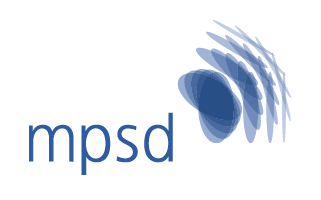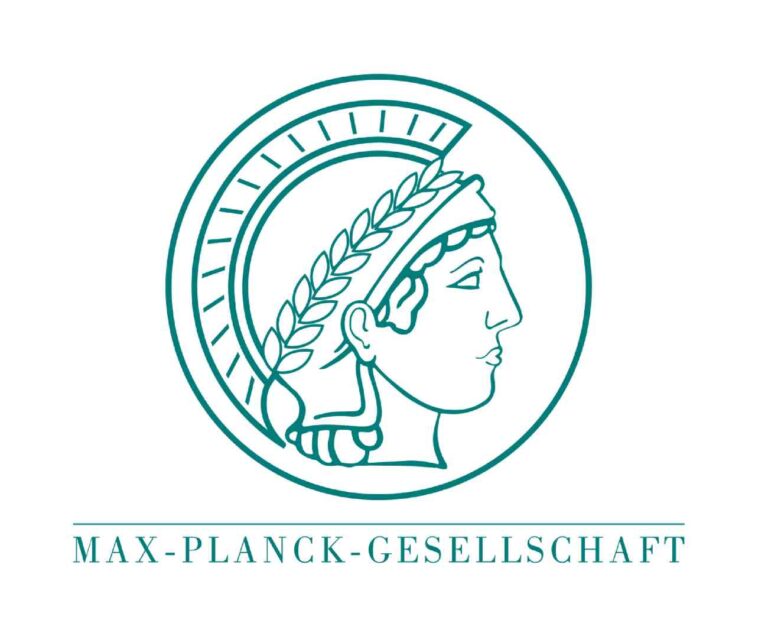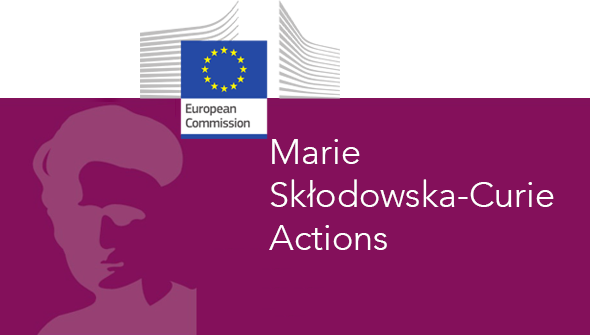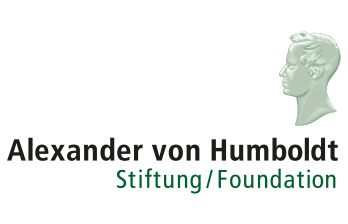Research
Femtosecond science on-chip
Quantum materials exhibit remarkable phenomena when driven by the strong fields in femtosecond pulses of light. Examples range from emergent hidden phases in complex oxides1–2 and dichalcogenides3, to signatures of light-induced superconductivity in cuprates4–5 and fullerides6, to preliminary demonstrations of ‘Floquet-engineering’ in topological insulators7–8 and graphene9. Up until this point, our understanding of these effects is based almost entirely on spectroscopic probes. The potential functionalities, however, ultimately manifest in the form of electrical transport. This all-important observable has been difficult to access in such experiments due to the limited bandwidth of conventional electronics, and has consequently remained largely unexplored to date.
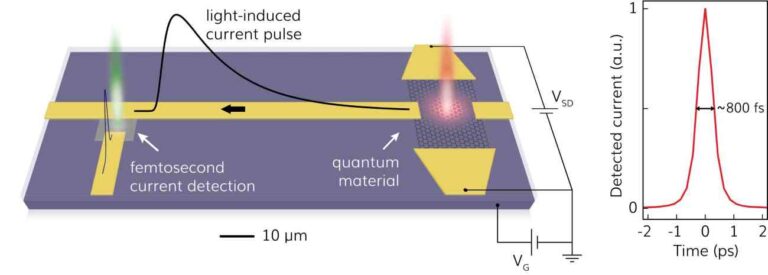
Our research group fills this void by providing direct access to ultrafast transport phenomena in quantum materials. We do so using an ultrafast optoelectronic circuitry concept based on photoconductive switches10. The circuitry is highly flexible in its implementation and devices can be fabricated with a wide range of capabilities. For example, circuits can be designed to probe the ultrafast flow of currents in materials after photoexcitation9,11–12, or launch and study the propagation of plasmon-polariton pulses13, or even perform near-field time domain terahertz spectroscopy under conditions that are inaccessible to free-space optics14. In conjunction with spintronic techniques, it may even be possible to directly probe the time-resolved flow of spin in optically-driven materials. Using these newfound experimental capabilities, our goal is to explore ultrafast transport phenomena in quantum materials and take the first steps toward turning novel non-equilibrium effects into functionalities.
Below is an overview of some of the research projects we are working on now.
Floquet-engineered topological transport in Dirac materials
Coherent light-matter interaction has been proposed as a means to engineer topological properties in topologically trivial systems. One proposal for such a ‘Floquet topological insulator’ is based on breaking time-reversal symmetry in graphene through a coherent interaction with circularly polarized light15. In this theory, the light field drives electrons in circular trajectories through the band structure. Close to the Dirac point, these states acquire a non-adiabatic Berry phase with each optical cycle, where the contributions are equal and opposite for the upper and lower bands. This time-averaged extra phase accumulation amounts to an energy shift that lifts the degeneracy of the Dirac point, opening a topological gap in the effective Floquet band structure.
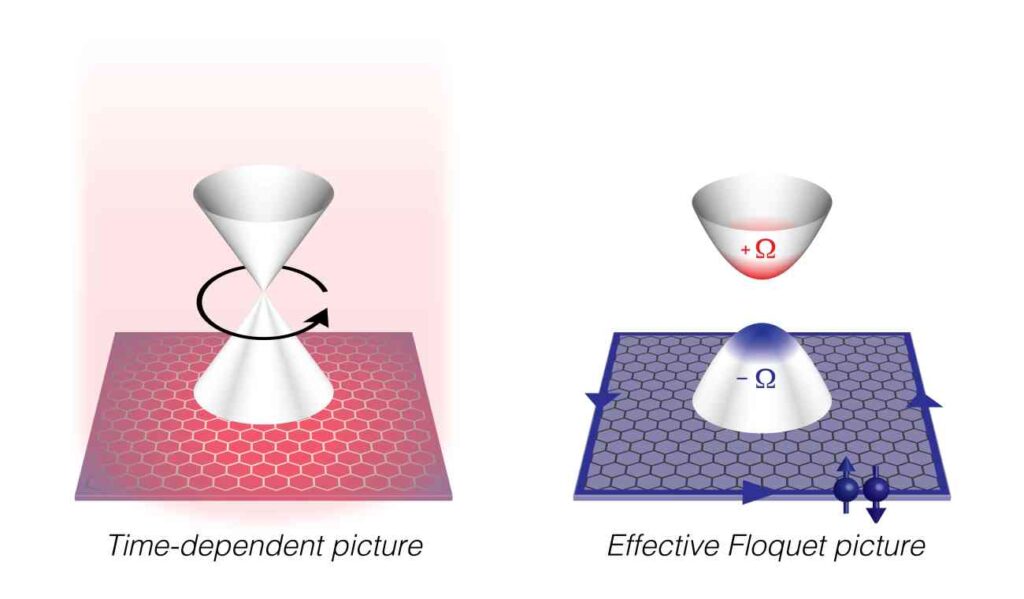
[9]
Using ultrafast transport techniques, we recently observed a light-induced anomalous Hall effect in graphene due to the realization of these topological Floquet-Bloch bands9. However, important open questions remain, in particular surrounding the formation of photon-dressed edge states and their topological protection17. We are investigating this exciting possibility now using a combination of ultrafast transport and on-chip terahertz techniques.
Optical control of magnetism in correlated insulators
Optical fields can also couple to the spin degree of freedom in solids. For example, magnetic (Zeeman) and magnetoelectric (e.g. Dzyaloshinskii—Moriya) interactions directly couple light to spins and have long been pursued as control mechanisms for potential opto-spintronic applications18.
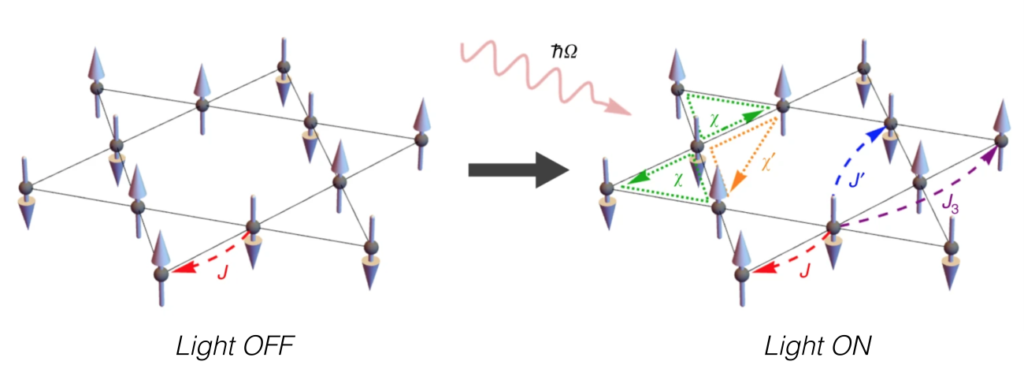
[20]
We are beginning to explore this new class of magnetism in quantum materials using a range of ultrafast optoelectronic techniques. We are particularly interested in studying how spin information is transported in these driven systems, which we are pursuing by combining our ultrafast circuitry with spintronic techniques.
Emergent phenomena in van der Waals heterostructures
Van der Waals heterostructures23, assembled by mechanically stacking thin flakes of quantum materials, can be designed to host a wide range of electronic phases that can be tuned with an unprecedented level of control. Following the discovery of superconductivity in twisted bilayer graphene heterostructures24, multiple platforms have been established exhibiting correlated insulating, metallic, superconducting and topological phases with various types of magnetic order25–35. Owing to their outstanding electrical tunability and design flexibility, these systems offer a fresh bottom-up approach to creating, controlling and understanding emergent phenomena in strongly correlated condensed matter.
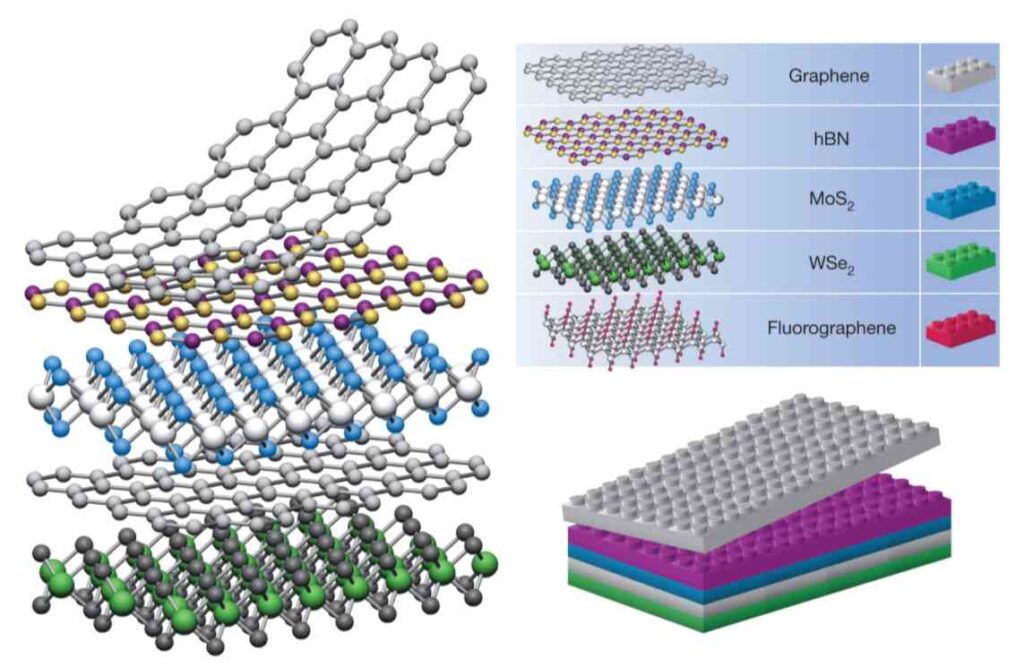
[23]
We are investigating the near-field spectroscopic and electrical transport properties of these van der Waals heterostructures at low temperatures and terahertz frequencies. The bandwidth of our circuitry encompasses the natural energy scale of emergent phenomena in these systems (1 THz ~ 4 meV). This allows us to resonantly probe important microscopic interaction parameters, such as the magnitudes and possible symmetries of correlation-induced energy gaps, which will help elucidate the nature of these newly discovered quantum phases.
References
[1] V. Kiryukhin et al., Nature 386, 813-815 (1997)
[2] J. Zhang et al., Nature Mat. 15, 956-960 (2016)
[3] L. Stojchevska et al., Science 344, 177 (2014)
[4] D. Fausti et al., Science 331, 189 (2011)
[5] W. Hu et al., Nature Mat. 13, 705-711 (2014)
[6] M. Mitrano et al., Nature 530, 461-464 (2016)
[7] Y.H. Wang et al., Science 342, 453 (2013)
[8] F. Mahmood et al., Nature Phys. 12, 306-310 (2016)
[9] J.W. McIver et al., Nature Phys. 16, 38-41 (2020)
[10] D.H. Auston, Appl. Phys. Lett. 26, 101 (1975)
[11] Z. Zhong et al., Nature Nano. 3, 201-205 (2008)
[12] L. Prechtel et al., Nature Comm. 3, 646 (2012)
[13] R.C. Ashoori et al., Phys. Rev. B 45, 3894 (1992)
[14] P. Gallagher et al., Science 364, 158 (2019)
[15] T. Oka & H. Aoki, Phys. Rev. B 79, 081406(R) (2009)
[16] D. Xiao, M.C. Chang & Q. Niu, Rev. Mod. Phys. 82, 1959 (2010)
[17] T. Kitagawa et al., Phys. Rev. B 84, 235108 (2011)
[18] A. Kirilyuk, A.V. Kimel & T. Rasing, Rev. Mod. Phys. 82, 2731 (2010)
[19] J.H. Mentink, K. Balzer & M. Eckstein, Nature Comm. 6, 6708 (2015)
[20] M. Claassen et al., Nature Comm. 8, 1192 (2017)
[21] S. Kitamura et al., Phys. Rev. B 96, 014406 (2017)
[22] F. Görg et al., Nature 553, 481-485 (2018)
[23] A.K Geim & I.V. Grigorieva, Nature 499, 419-425 (2013)
[24] Y. Cao et al., Nature 556, 43-50 (2018)
[25] M. Yankowitz et al., Science 363, 1059 (2019)
[26] X. Lu et al., Nature 574, 653-657 (2019)
[27] A.L. Sharpe et al., Science 365, 605 (2019)
[28] M. Serlin et al., Science 367, 900 (2020)
[29] G. Chen et al., Nature 572, 215-219 (2019)
[30] G. Chen et al., Nature 579, 56-61 (2020)
[31] X. Liu et al., Nature 583, 221-225 (2020)
[32] Y. Cao et al., Nature 583, 215-220 (2020)
[33] J.O Island et al. Nature 571, 85-89 (2019)
[34] E.C. Regan et al., Nature 579, 359-363 (2020)
[35] Y. Tang et al., Nature 579, 353-358 (2020)

